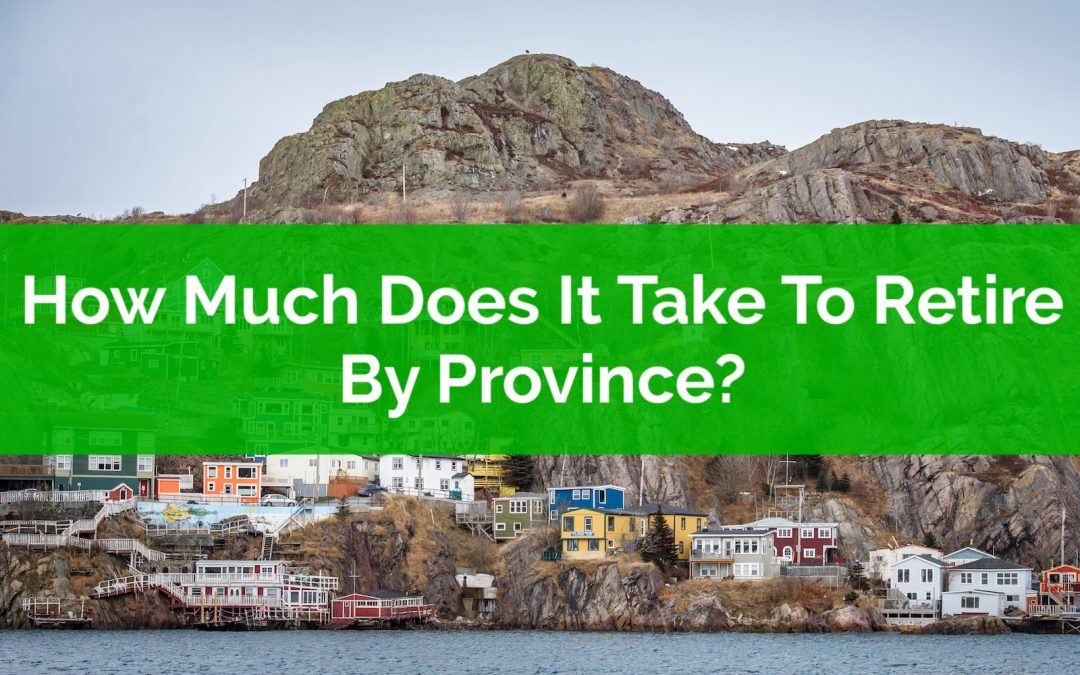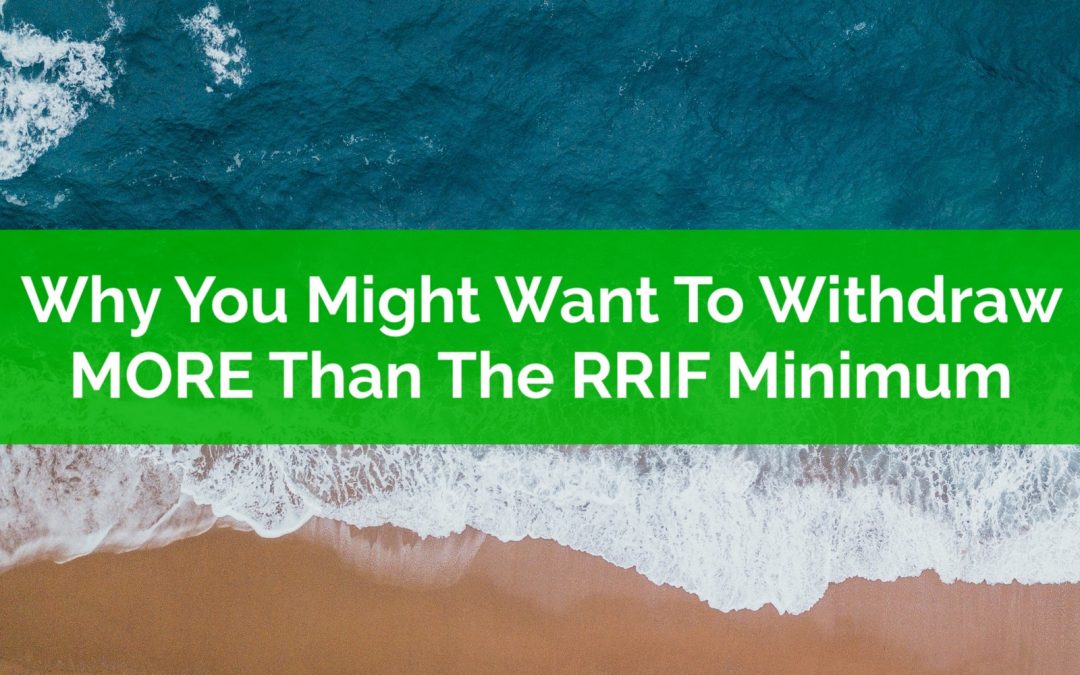
by Owen | Apr 4, 2022 | Financial Planning, Retirement Planning, Tax Planning
The RRSP is a great financial planning tool. Investments grow tax-free within the account. Contributions to an RRSP reduce taxable income. And in some unique circumstances, it may even be advantageous to make contributions in one year and then deduct them in future years.
RRSP contributions and withdrawals will decrease and increase taxable income respectively. This effect can be seen on the tax return.
So, how do tax returns work when there is an RRSP contribution? What effect does an RRSP contribution have on the tax return?
And what about in the future? What happens when RRSP withdrawals are made? What effect does an RRSP withdrawal have on the tax return?
These are important questions. The benefit of strategic RRSP contributions and withdrawals can be $10,000’s or more.
Understanding how RRSP contributions and withdrawals affects your tax return is very important for Canadian retirement planning. We’ll go through the basics of how RRSPs work, as well as a few examples to show how an RRSP contribution or withdrawal shows up on the tax return.

by Owen | Mar 12, 2022 | Investment Planning, Tax Planning
For many investors adjusted cost based is something they may never need to worry about (but should still be aware of!) For most investors who are only using tax-sheltered accounts like the TFSA or RRSP, they never need to worry about adjusted cost base (or ACB for short).
This is because ACB is only required to calculate capital gains tax, and because most investors are investing inside a tax-sheltered account like a TFSA or RRSP, this is a non-issue.
But for anyone with investments outside of a tax-sheltered account, adjusted cost base is extremely important! And your ACB is something that you need to stay on top of.
Adjusted cost based is something every individual investor needs to track on their own. Yes, some mutual funds, robo-advisors, or even brokerage accounts might track adjusted cost based for you, but in the fine print they typically tell investors to track it themselves too. Why? Because they don’t want to be held accountable for a tax issue in the future.
Here’s why we need to worry about ACB and some tips on how to track it…

by Owen | Feb 28, 2022 | Retirement Planning, Tax Planning
Planning for retirement is all about spending. Spending impacts almost everything about a retirement plan. More spending means more withdrawals and more taxes. Less spending means less withdrawals and less taxes.
More spending could mean there is a higher risk of running out of money. Less spending could mean that we need to be careful around estate planning because there may be a large amount of assets being passed on.
But spending needs to be supported by investment assets, so how much do we need to have invested? How much does it take to retire?
In this post, we’re going to take an interesting look at this question. We’re going to look at how much we need to retire depending on the province we live in. We’re going to look at how much you need to have invested to support the same retirement spending.
Disclaimer: Nothing in this post should be considered financial planning advice. We’re going to use averages and province wide tax rates with only general deductions. Because we’re all unique in some special way, the numbers in this post won’t apply to you, but the relative amount you need to have invested between provinces is interesting!

by Owen | Feb 21, 2022 | Investment Planning, Retirement Planning, Tax Planning
At some point every person with an RRSP is going to need to make a decision about converting their RRSP to a RRIF. The Registered Retirement Income Fund (RRIF) works very similarly to the RRSP with a couple notable exceptions.
One of those exceptions is that there is a minimum RRIF withdrawal each year. Retirees need to make this minimum withdrawal from their RRIF each year and this minimum will slowly increase from year-to-year. The RRIF minimum will escalate each year as a retiree gets older. By the time a retiree reaches their mid-90s they are forced to withdrawal 20% of their RRIF each year!
Because the withdrawal is a minimum, and conversion from a RRSP to a RRIF is mandatory, this often leads people to believe that keeping money in a RRIF is a good idea. After all, if they’re being forced to take money out, wouldn’t that suggest that keeping money in is a good idea?
For many people, taking out only the minimum RRIF withdrawal each year is actually a bad idea. Many people would benefit from a different RRIF withdrawal strategy. Many people would benefit from taking out more than the minimum each year. They would increase their financial flexibility, they would decrease the tax on their estate, and they could even qualify for certain benefits late in retirement.
In this post we’ll look at RRIF withdrawal rules, the minimum RRIF withdrawal percentage by age, and we’ll explore two scenarios where we show how a retiree can benefit from RRIF withdrawals that are larger than the minimum.
We’ll also explore how this strategy is even more impactful after a large stock market correction.

by Owen | Jan 16, 2022 | Government Programs, Tax Planning
One of the biggest financial planning opportunities for regular people is around government benefits. Unless you’re earning an extremely high income you will probably receive some form of government benefit over the course of your life.
As a student, you may receive GST/HST credits. When you have a family, you may receive the Canada Child Benefit. And when you’re a senior you may receive Old Age Security and the Guaranteed Income Supplement.
Understanding how government benefits work can help you optimize how much you receive both now and in the future. A few simple changes can increase your benefits by $1,000’s per year and help you save more, increase your financial security, and general increase your peace of mind.
Some families may be doing this already, but not realize it.
Other families may not be doing it at all, and losing $1,000’s.
Most benefits are based on your net income and most benefits have clawback rates associated with them. As your income increases, your benefit will go down based on this clawback rate. But not all income is created equal, and some types of saving will increase your benefits.
One of the best ways to optimize your benefits is by carefully planning RRSP contributions. RRSP contributions decrease your family net income and increase your benefits. This increase in benefits can provide a big incentive to save. Depending on the number of children, for some families the increase in benefits from an RRSP contribution is worth more than the tax refund! In total, some families can get back $0.60-$0.70 for each $1 they contribute to RRSPs.
On the other side, when you’re ready to withdrawal from your RRSPs, these withdrawals need to be carefully planned. RRSP withdrawals increase family net income and can potentially trigger clawbacks on GIS and OAS. With clawbacks on GIS reaching up to 75% it’s important to plan RRSP withdrawals carefully to avoid losing 50%-75% of every $1 you withdraw from RRSPs in retirement.
If you’re earning a normal/average income then understanding government benefits can potentially provide a big boost to your long-term financial security. Ignoring government benefits can make things unnecessarily difficult.

by Owen | Dec 20, 2021 | Government Programs, Tax Planning
As we approach the end of the year, one strategic tax and gov. benefit opportunity to take advantage of is making a large RRSP withdrawal.
Making a large RRSP withdrawal before the end of the year can make sense in a few situations. If you find yourself in one of these situations, a strategic RRSP withdrawal can help reduce income tax and increase government benefits over the course of your plan.
Out of these three situations we’ll explore in this blog post, one situation happens before retirement and about 1 in 3 people will find themselves in this situation. The other two situations happen after retirement and can help avoid higher income tax rates later in retirement.
Page 4 of 11«...23456...»






